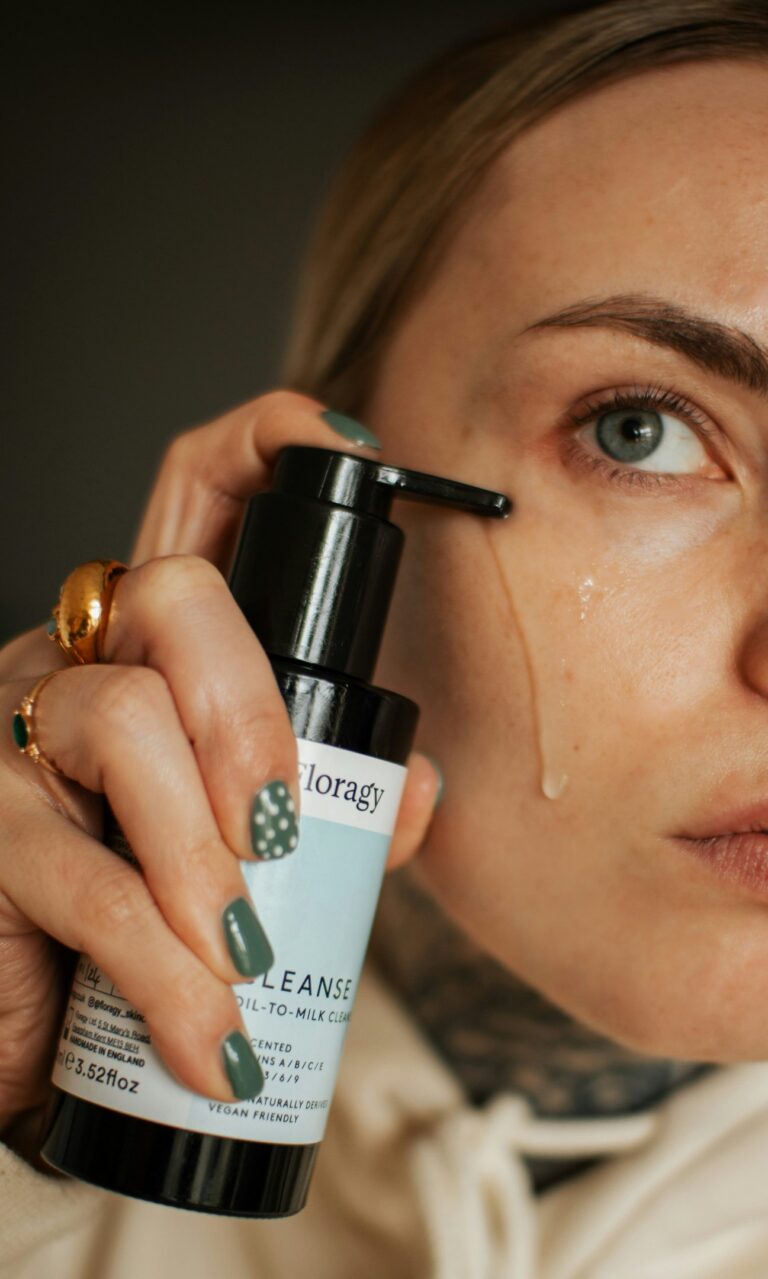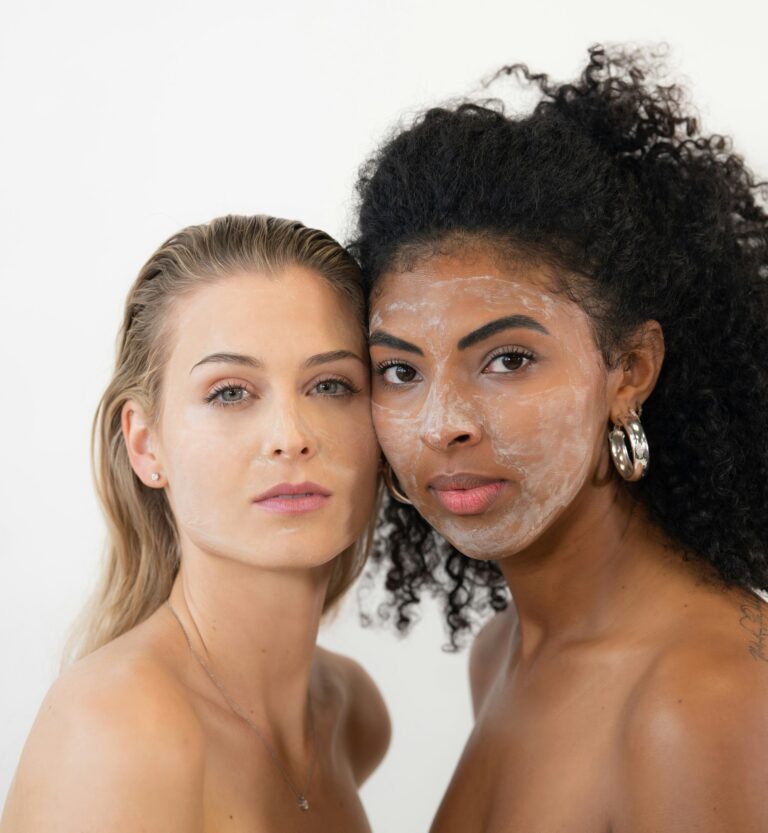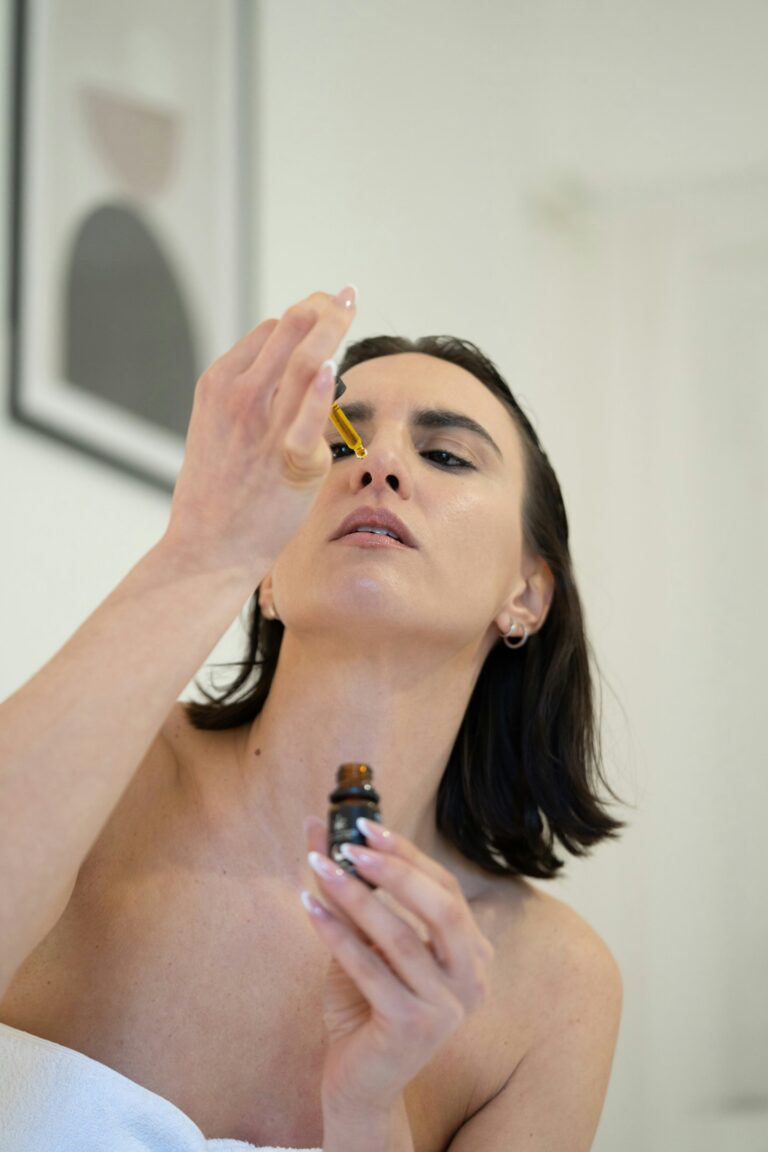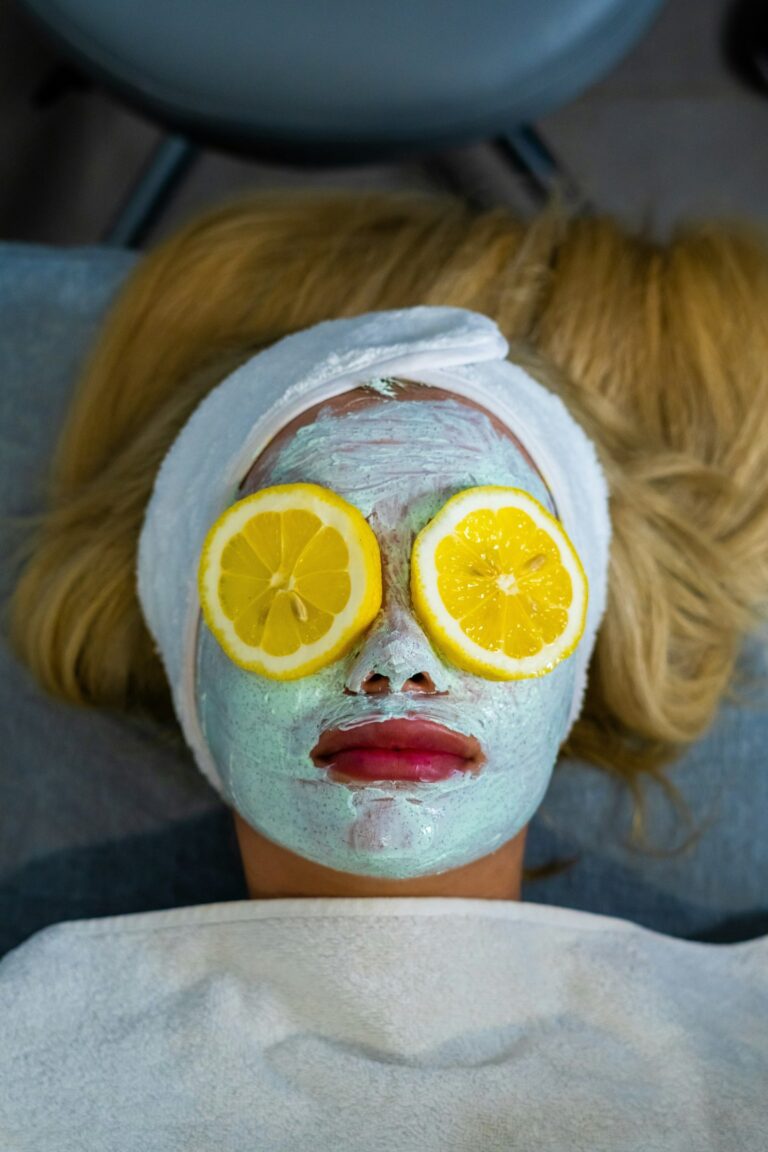Guide to Combination Skin: Fix Your Confusing Complexion in 2025
Today with this blog we are going to find the ultimate guide to combination skin. Learn top expert tips, daily routines and top products to balance oily and dry areas for a radiant glow in for 2025.
Does your forehead shine like a spotlight by noon while your cheeks feel tight and flaky with redness? If so you are dealing with combination skin which is a tricky mix that can make your skincare routine feel like solving a puzzle. This topic to combination skin will walk you through everything you need to balance oily and dry areas, leaving your complexion glowing and healthy in 2025.
I have spent years tackling my own combination skin fighting oily T-zones and soothing dry patches. It is frustrating when one product works for half your face and makes the other half even worse. But with the right knowledge, products and routine, you can make peace with your skin. Let us find out the causes treatments and daily tips to tame your confusing complexion.
What Is Combination Skin and How to Spot It
Combination skin means your face has both oily and dry or normal areas. Typically, the T-zone like your forehead, nose and chin, produces excess oil, leading to shine or breakouts. Meanwhile your cheeks and jawline might feel dry tight or flaky. It is like your skin can not pick a side. This mix makes finding the right products tricky, as what controls oil might dry out your cheeks and what hydrates can clog pores.
Not sure if this is you, just try a simple test. Wash your face with a gentle cleanser and wait an hour, than check. If your T-zone is shiny but your cheeks are still feeling tight, you have got combination skin. For a detailed method, see our guide on how to identify your skin type at home. Knowing your skin type is the foundation for a routine that works.
Signs You Have Combination Skin
- If it is shiny T-zone by midday, but dry or tight cheeks.
- Breakouts on your forehead or chin with flakiness elsewhere is a clear cut sign.
- Skincare products work for one area but irritate another can also be a reason.
- If pores appear larger in the T-zone than on cheeks.
Combination skin is one of the most common skin types, but it is often misunderstood by many. Factors like genetics, hormones and environment play a role as Wikipedia explains in its overview of skin types. Recognizing these signs helps you choose products that balance your skin’s needs without causing irritation.

Image Credit: Bruno Cortes
Combination Skin Causes: What’s Behind the Imbalance
Your skin’s split personality is not random. Combination skin often stems from a mix of some internal and external factors. Sebaceous glands in your T-zone are more active, producing excess oil that leads to shine, clogged pores or breakouts. Meanwhile some areas like your cheeks produce less oil, leaving them dry or flaky. Hormones stress diet and weather can tip the scales, making oily areas more oilier or dry patches worse.
For example like stress or menstrual cycles can spike oil production, while cold winter air or low humidity dries out your cheeks. Your diet matters too as high sugar or dairy heavy foods can trigger oiliness in the T-zone, as studies suggest dairy may increase sebum production. Using the wrong products also throws things off, harsh cleansers strip moisture causing your T-zone to overcompensate with more oil, while heavy creams clog pores. Over washing is most often a common culprit leading to irritation and rebound oiliness. Curious about other pitfalls? Check our list of common skincare mistakes. If dry patches are a big issue, our guide on skincare for dry skin offers extra tips to hydrate those areas without aggravating oily zones.
Common Triggers for Combination Skin
- Genetics: This often is a main cause of your skin type is often inherited from your parents.
- Hormonal changes: Stress, periods or pregnancy can boost oil production can be triggers.
- Weather: Humidity increases oil, while cold air dries out skin.
- Harsh products: Over using drying cleansers or heavy moisturizers disrupt balance.
- Diet: Sugary or dairy heavy diets can increase oil in the T-zone.
- Lifestyle: some times lack of sleep or poor hydration can worsen dry patches.
Understanding these triggers lets you tailor your routine. For instance, tweaking products based on the season, managing stress with relaxation techniques or by adjusting your diet to limit dairy can keep your skin balanced properly. Staying hydrated by drinking enough water also supports your skin’s overall health and reducing dryness without adding oiliness.
Best Skincare Routine for Combination Skin
Building the best skincare routine for combination skin is like creating a playlist as every step needs to flow together for harmony and betterment. The goal is to control oil in the T-zone while hydrating dry areas, all without overwhelming your skin. Here is a simple, effective routine for morning and night to balance your complexion.
Step 1: Cleanse Gently
Always start with a gentle, foaming cleanser to remove oil and impurities without stripping moisture. Look for sulfate free formulas with ingredients like niacinamide to balance out oil production. Wash twice daily morning and night to keep pores clear. Need help choosing than check our list of best cleansers for every skin type.
Step 2: Tone to Balance
A proper lightweight toner preps your skin and restores its pH balance. Choose alcohol free formulas with soothing ingredients like witch hazel or chamomile to calm dry areas and control oil. Apply it with a cotton pad for even coverage to set the stage for serums and moisturizers.
Step 3: Treat Specific Concerns
Serums target mostly specific issues. For oily T-zones, a serum with niacinamide reduces oil and minimizes pores. For dry areas try a hydrating formula with hyaluronic acid. Apply serums to specific areas to address both concerns without overloading your skin. Browse our top serums for every skin type for ideas.
Step 4: Moisturize Strategically
Finding the best and most suitable moisturizer for combination skin is crucial. Use a lightweight non comedogenic gel cream for all over hydration without clogging pores. For extra dry areas like cheeks, apply a richer hydrating cream. This layered approach keeps your skin balanced. See our top moisturizers for recommendations.
Step 5: Protect with Sunscreen
Sunscreen is non negotiable even indoors to protect against UV damage and prevent uneven texture. Choose a broad spectrum SPF 30 or higher that is lightweight and non greasy. Tinted options can double as light coverage for a natural glow. Explore our best tinted sunscreens.

Image Credit: Karolina Grabowska
Combination Skin Products to Try in 2025
Choosing the right products for combination skin can be tricky and can feel like a treasure hunt but it does not have to be. Focus on gentle, non comedogenic formulas that hydrate dry areas and control oil in the T-zone. Here are six top picks to simplify your routine which all tailored for combination skin.
- Cleanser: CeraVe Foaming Facial Cleanser uses ceramides and niacinamide to clean up oily areas without drying out cheeks.
- Moisturizer: Neutrogena Hydro Boost Water Gel is a lightweight gel that hydrates without clogging your skin pores.
- Hydrating Cream: Rufolia Periorbital Treatment from The Ayurveda Experience hydrates dry cheeks with almond oil and Ayurvedic herbs.
- Face Oil: Yauvari Amplified Youth Spring balances your skin with rose and sandalwood and perfect for night use.
- Primer/Moisturizer: Laura Geller Spackle Skin Perfecting Primer: Hydrate hydrates with aloe vera while controlling shine.
- Moisturizer: Dermelect Rapid Barrier Repair Cream uses ceramides to hydrate and repair without greasiness of your skin.
Want budget friendly options, than go for? Our budget-friendly skincare routine has more picks. WebMD suggests using products with minimal ingredients to avoid irritation, especially for sensitive combination skin.

Image Credit: Shvets Production
Natural Remedies for Combination Skin
If you prefer natural solutions than your kitchen might hold the key to balance out your skin problems. I have tried homemade masks like honey and oatmeal which soothe my dry cheeks while keeping my T-zone in check. These remedies are affordable easily , gentle and is perfect for combination skin. For a luxurious natural option consider a face oil with a rose or sandalwood to balance your complexion at night.
DIY Treatments to Try at Home
- Honey and Yogurt Mask: Mix equal parts of honey and yogurt mask for a hydrating, antibacterial mask. Leave on for 15 minutes and then rinse.
- Green Tea Toner: Brew green tea, cool it and apply with a cotton pad to reduce oil and redness.
- Aloe Vera Gel: Use fresh aloe to hydrate dry areas without clogging pores.
- Oatmeal Scrub: Mix ground oats with water for a gentle exfoliant that soothes and absorbs oil.
Love DIY? Our DIY face mask recipes offer more natural ideas for glowing skin.

Image Credit: Retha Ferguson
Daily Skincare Tips for Combination Skin
Managing combination skin is all about consistency and balance. Think of your routine as a daily habit like brushing your teeth as it works best when you stick to it. Here are practical tips to keep your skin glowing every day, no matter the season.
- Cleanse twice daily: Daily use a gentle, foaming cleanser to avoid stripping your skin.
- Moisturize strategically: Apply a lightweight gel moisturizer all over, and add a hydrating cream to dry patches which is highly beneficial.
- Apply sunscreen daily: UV rays sneak through windows, so use SPF even indoors.
- Exfoliate gently: Once or twice a week if you find it easy than use a mild exfoliant to remove dead skin without irritating dry areas.
- Avoid touching your face: This prevents oil and bacteria buildup in the T-zone.
Sunscreen is most critical for protecting your skin barrier and preventing uneven texture. A hydrating primer can also serve as a base to control shine while moisturizing.

Image Credit: Kampus
Skincare Mistakes to Avoid with Combination Skin
Combination skin is tricky because it has two different needs. So making a wrong choices can throw your skin out of balance. Here are common mistakes and how to fix them to keep your complexion happy.
- Over-cleansing: Washing your skin too often or with harsh soaps dries out cheeks and triggers more oil in the T-zone. Use a gentle cleanser instead for much better results.
- Skipping moisturizer: Even oily areas need hydration. So choose a lightweight gel for balance.
- Using heavy products everywhere: Thick creams can clog pores in oily zones. Reserve richer products for dry areas only.
- Ignoring sunscreen: UV exposure worsens oiliness and dryness. Always apply SPF daily.
- Over-exfoliating: Scrubbing too often irritates dry areas. Keep it in mind to limit it to 1 to 2 times weekly with a gentle exfoliant.
These mistakes can make your skin feel worse. So completely avoid them, which helps maintain balance and keeps your complexion smooth.
Seasonal Adjustments for Combination Skin
Your skin’s needs shift with the seasons and combination skin is especially sensitive to these changes. In summer, humidity can make your T-zone oilier while air conditioning dries out your cheeks. In winter cold air and indoor heating worsen dry patches, yet your T-zone might still stay shiny. Adjusting your routine for maintaining your skin seasonally keeps your skin balanced year-round.
Summer Tips
In warm months, focus on oil control. Always use a lightweight gel moisturizer and a mattifying primer to keep shine at bay. Increase cleansing to twice daily with a foaming cleanser to manage excess oil. Exfoliate gently to prevent clogged pores without irritating dry areas. Stay hydrated by drinking water to support your skin’s overall health.
Winter Tips
In colder months, dry areas need extra care. Apply a hydrating cream to cheeks and under eyes for nourishment. At night use a lightweight face oil to lock in moisture across your face. For overall barrier support, a ceramide rich moisturizer helps protect against harsh weather. Avoid hot showers which can strip moisture and worsen dryness.
FAQs About Combination Skin
Q1: How do I know if I have combination skin?
A: If your T-zone is oily but your cheeks feel dry or normal, you shows you likely have combination skin. A simple test can confirm—check our guide on identifying your skin type.
Q2: What’s the best moisturizer for combination skin?
A: Always look for lightweight, non comedogenic gel creams that hydrate without clogging pores. For dry areas, a richer hydrating cream can provide extra moisture.
Q3: Can I use natural remedies for combination skin?
A: Yes you can. Honey, aloe vera and green tea balance oily and dry areas. A natural face oil with rose or sandalwood can also hydrate without greasiness. See our DIY face mask recipes for more ideas.
Q4: How often should I exfoliate combination skin?
A: Exfoliate 1 to 2 times a week with a gentle product like a lactic acid exfoliant. Follow with a lightweight moisturizer to soothe and hydrate.
Conclusion
Combination skin does not have to be a daily struggle. With the right routine, products and patience you can balance oily and dry areas for a radiant complexion in 2025. Start with a gentle cleanser, use targeted serums for oily and dry zones, and never skip sunscreen. Regular use of natural remedies like honey masks or green tea toners can add a gentle touch to your routine. Consistency is your best friend to stick with these tips and share your glow up with us!
Want insider access to the latest skincare product recommendations and glow boosting tips? 
Disclaimer: This article may contain affiliate links. If you click and purchase, we may earn a commission at no extra cost to you. As an Amazon Associate, we earn from qualifying purchases.










